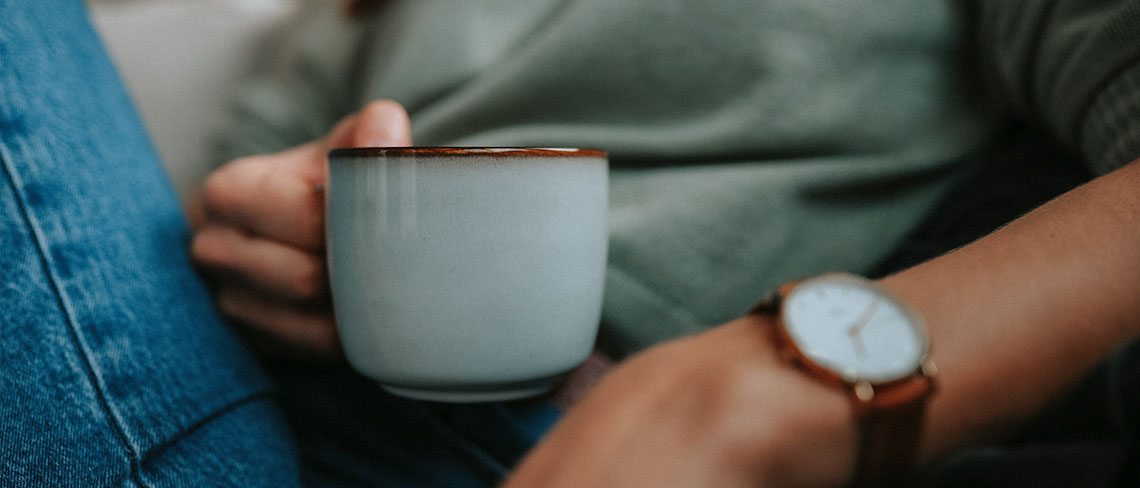
TEMPUR® sleep specialist, Thomas Høegh Reisenhus, shares expert insights on sleepwalking.
Sleepwalking – also known as somnambulism – is estimated to affect up to 15% of the UK population . Whilst sleepwalking or living with a sleepwalker can be challenging, understanding what causes it and how best to manage it can ensure a better night’s sleep for both you and your loved ones.
TEMPUR® sleep specialist & sleep counsellor, Thomas Høegh Reisenhus, says: “Whilst sleepwalking doesn’t happen to everybody, it is relatively common.
“The exact causes of sleepwalking are varied, and to a degree, not entirely known, which can cause difficulty when trying to manage it.
“Sleep deprivation is often a trigger for sleepwalking episodes and these episodes can then add to a cumulated lack of sleep, creating a self-perpetuating cycle. Lifestyle factors such as stress or consuming too many stimulants can also increase the propensity to sleepwalk, and there could also be genetic factors at play.
“Whilst we can’t change genetics, it’s important to understand how to manage the lifestyle factors that are known to trigger sleepwalking. Sleep hygiene, stress management and alcohol and caffeine intake should all be taken into careful consideration. Similarly, ensuring your bedroom is safe as well as comfortable is key, especially where children are concerned.”
Read on for Thomas’s guide to understanding sleepwalking and the simple lifestyle changes that could help prevent regular episodes…
Adults vs children
Sleepwalking is most common in children due to how they cycle in and out of the deeper, non-REM (rapid eye movement) sleep, though around 1.5-4% of adults also struggle with somnambulism.
Sleepwalking happens in the deepest part of non-REM sleep, often within an hour or two of falling asleep. For both adults and children, what happens during an episode are the same and can include standing up, walking around, talking, or carrying out more complex activities like getting dressed, unlocking doors or going to the toilet.
The practical dangers of sleepwalking are also the same for both adults and children, however adults are more likely to be subconsciously aware of their surroundings and so less likely to hurt themselves. Precautions like stairgates can be especially helpful, therefore, if living with a child that sleepwalks.
Whilst it’s tempting to wake your loved one up if they are sleepwalking, it’s worth remembering that people who sleepwalk don’t usually have any recollection of doing so, so shocking them awake could cause distress or trigger a shock reaction or response. To avoid this, it’s best to gently talk to them and guide them back to bed without attempting to wake them.
Stimulant effects
If you experience sleepwalking episodes, it’s even more important to have a consistent sleep routine and avoid anything that has the potential to further affect your body’s natural sleep pattern and disrupt your quality and quantity of sleep. Therefore, the consumption of stimulants such as caffeine and alcohol should be carefully considered.
Many of us rely on caffeine’s energising effects to help us feel more awake and optimise our performance at work, when studying, or at the gym. Whilst a synthetic version is used in some medications and energy drinks, it’s also naturally found in tea and coffee – everyday drinks that we all enjoy.
Whilst caffeine can undoubtedly have a place in any healthy, balanced lifestyle, it essentially highjacks the nervous system and can take up to ten hours to completely leave the body. This is less than ideal for anyone wanting a solid night’s sleep, but potentially even more problematic for those that sleepwalk and already struggle with a lack of quality sleep. As such, it’s best for sleepwalkers to avoid consuming caffeine after midday.
Similarly, alcohol can disrupt the circadian rhythm – which makes up your natural sleep cycle – impacting quality of sleep, resulting in daytime sleepiness or even triggering anxiety. On average, it takes the body one hour to process one unit, but this can vary person-to-person, so a good rule of thumb is to stop drinking one hour before bed per unit consumed.
Reducing stress
High levels of stress have been linked to sleepwalking, with some researchers suggesting that anxiety or anger throughout the day may increase the chances of sleepwalking in people who are prone to episodes. So, working on stress relief and management is crucial for sleepwalkers.
Incorporating stress busting activities that you enjoy into your daily routine can be a great help. Physical exercise like running, gym classes or yoga, more gentle activities such as a walk in the park, gardening, or meditation, or even spending quality time with loved ones are all great options to minimise stress.
Getting in touch with your creative side and painting, writing, sewing or crafting are also proven to help reduce stress and anxiety, as is taking time out for you. This could be as simple as switching your phone off, logging out of emails, and enjoying a night in with a take-away and a movie or a good book – whatever helps you feel more relaxed..
If your stress or anxiety is ongoing, do reach out to a professional who can help and guide you to a solution.
Bedtime routine
There’s a reason parents place so much importance on their children’s bedtime routines and it’s because, quite simply, a solid wind down routine is important at any age. In the hours before bed, we should try to incorporate activities that promote relaxation to give our nervous system a chance to rebalance after the stresses of the day and signify to both mind and body that we’re approaching sleep.
Binge-watching a crime thriller TV show before bed may make you feel like you’re unwinding, but could actually over-activate your brain. This over-activation of the mind triggered by over-stimulating content can contribute to disrupted sleep and possible sleepwalking episodes too.
To promote the state of relaxation required to prime yourself for sleep, rather than boxsets, opt for light stretching, a warm bath, a milky drink, journaling, reading a beloved book or catching up with your partner or loved ones.
Ultimately, achieving a good night’s sleep is an art, not a science. So, what works for one person may not work for another. It’s important to find a routine that works for you to put you in the best frame of mind before sleep and to lower the risk of a sleepwalking episode.
Sleep environment
Your bedroom should be cave-like – cool, quiet and dark.
Our bodies’ internal temperature needs to drop by one or two degrees to ensure a good night’s sleep, so your bedroom should be kept around 18 degrees Celsius. Removing light emitting devices like clocks, mobile phones, devices and chargers, which can boost alertness, can also help contribute to a good night’s sleep.
A clutter-free bedroom can create a more peaceful, calm environment to drift off to sleep in but, for sleepwalkers it has the added benefit of less items to knock over, bump into or trip over at night.
If you’re having regular sleepwalking episodes that are impacting your quality of sleep or posing a risk of injury or household damage, it is advisable to consult your GP to explore possible causes or treatments.
For more information on TEMPUR®, visit www.tempur.co.uk
-Ends-
Notes to Editors:
- For more information on TEMPUR®, visit www.tempur.co.uk
- Please contact us should you be interested in receiving product for review or for competition prizes
- Tempur is on the affiliate links platform, Webgains
For further press information, please contact:
Tilly Everard | Anna Nyman | Elsa Findlay | Julie Aguilera
Rooster.
T: +44 (0)203 440 8930
E: [email protected]
About TEMPUR®
TEMPUR® researches, develops, manufactures and distributes mattresses, pillows and other sleep products to improve the sleep experience worldwide.
TEMPUR® Material is the original pressure relieving mattress product made up of viscoelastic – billions of ultra-sensitive open cells that exist between a solid and a liquid state. TEMPUR® products provide the ultimate comfort and support, helping you to get a great night’s sleep night after night.
Born from NASA technology, TEMPUR® Material was originally developed in the early 1960’s for use onboard the space shuttles. TEMPUR® scientists realised the enormous potential of this material and began experiments in the early 1980’s to perfect it for sleep. After millions of pounds in research, the technology was perfected into the TEMPUR® Material we know today. As a result, TEMPUR® was the only mattress and pillow brand recognised by NASA and certified by the Space Foundation in May 1988.
Each TEMPUR® product undergoes sixty-seven different quality checks, ensuring superior quality and durability.
TEMPUR® products can be purchased direct via the TEMPUR® UK website, Dreams, John Lewis, Bensons for Beds, and Furniture Village or from leading independent retailers or from any of 10 TEMPUR® brand and outlets stores.
TEMPUR® is a subsidiary of TEMPUR® Sealy International Inc.
Follow TEMPUR®:
- Twitter: @TempurUK
- Facebook: @TempurUK
- Instagram: @tempur_uk
- YouTube: https://www.youtube.com/user/TempurUKonTV






